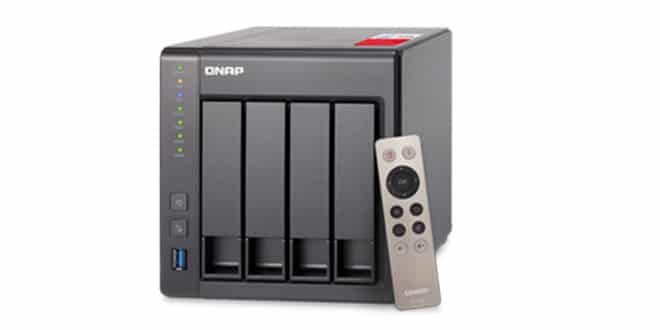Conclusion
QNAP NAS devices are always packed with plenty of features, and the TS-451+ is no exception. With the latest 4.2 firmware, the TS-451+ offers everything that you can get from the more expensive models that QNAP offers such as QvPC, virtualization, Container Dock, Qsirch and much more. So in terms of features, you are not missing anything.
The unit also performs well at handling data transfer. The Intel J1900 SoC delivers decent performance, and while it is clearly not as fast as the TVS models, based on the benchmarks it is really fast enough for what the unit is intended for. For home use and small business use, the TS-451+ should offer plenty of speed. The inclusion of the media remote is a clear indication that QNAP is targeting the TS-451+ as a HTPC or media streaming device. For this purpose, the TS-451+ is plenty capable with the 4K HDMI output support and hardware assisted transcoding. The inclusion of the media remote is nice, though it feels a bit on the cheap side and we do wish it would have greater functionality to help us to interact with the NAS a little better.
The pricing is where things get a bit interesting.The TS-451+-8G is priced similarly to the TVS-463 that uses AMD SoC. This makes it a bit of a tough choice to choose between the two models. The TS-451+ ranges from $529 for the base model with 2GB of RAM up to $649 for our review model, the TS-451+-8G with 8GB of RAM. Clearly, anyone who is looking to buy a NAS would probably just want to pick up the base model and add the RAM yourself, since 2x4GB of DDR3 SoDIMM is not going to cost you the $120 that QNAP is asking (Not to mention that it is quite easy to just open the NAS up and install the RAM). The TVS-463 on the other hand, retails at $650, and offers higher performance, a premium metal chassis and metal drive tray, additional features such as hardware encryption support, and an integrated power supply. The inclusion of the multimedia remote with the TS-451+ is nice, but it is something that users can buy as an add-on with the TVS-463 or simply opt to use the mobile app for media navigation. The TS-451+ does have some advantages, such as lower power consumption due to a more power efficient Intel SoC and probably due to better optimization and dual-channel memory support, the UI also seems to be a bit more responsive on the Intel system than the AMD. Additionally, the performance under visualization and the QvPC also works a bit better under this Intel system.
Ultimately, it boils down to if you are looking for the raw transfer speed. If so, then you would want to choose the TVS-463. But if other factors such as power consumption and if you plan to use all of the additional features that QNAP has to offer, the TS-451+ is worth considering. Taking everything into consideration, we feel the TVS-463 would probably be our choice over the TS-451+.
| Pros | Cons |
| Good performance
Dual Ethernet ports Plenty of features Easy to navigate and use user interface Runs cool and quiet
|
Plastic chassis
Plastic drive tray feels a bit flimsy External power adapter
|
 Bjorn3D.com Bjorn3d.com – Satisfying Your Daily Tech Cravings Since 1996
Bjorn3D.com Bjorn3d.com – Satisfying Your Daily Tech Cravings Since 1996








